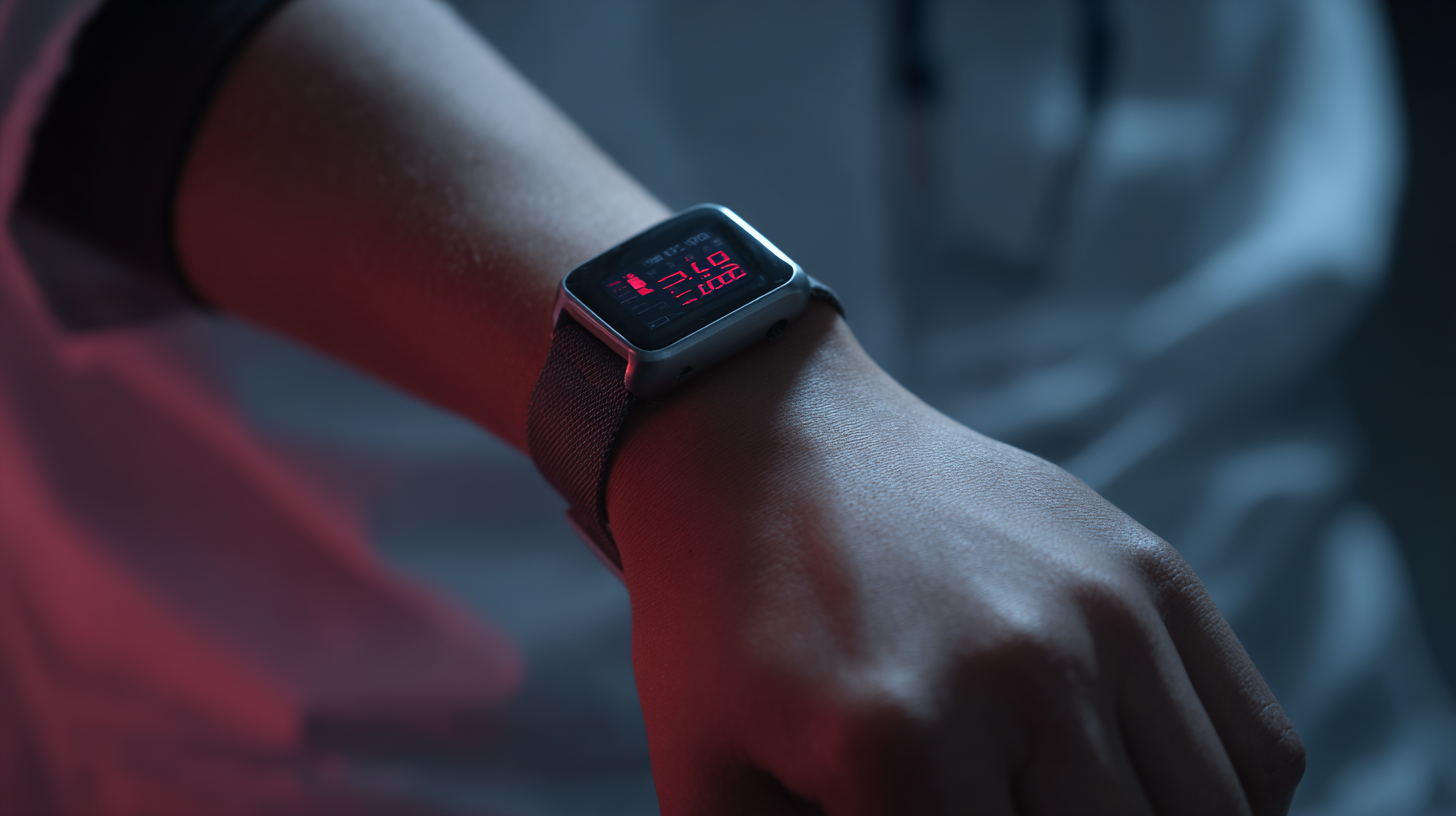Leading the World in Health Monitoring Innovations from China's Premier Factories
In recent years, China has emerged as a global leader in the production and innovation of health monitoring devices, demonstrating remarkable advancements in technology and manufacturing capabilities. This blog aims to explore the top strategies employed by China's premier factories to revolutionize the health monitoring industry, reflecting a commitment to enhancing health outcomes worldwide. The landscape of health monitoring is rapidly evolving, with devices becoming more sophisticated, user-friendly, and integrated into daily life. As healthcare demands escalate, these innovations not only promise to empower individuals in taking charge of their well-being but also signify a shift in the healthcare paradigm.

Join us as we delve into the cutting-edge techniques and best practices that are shaping the future of health monitoring devices, positioning China at the forefront of this vital sector.
Innovative Technologies Shaping Health Monitoring Solutions in China
Innovative technologies are rapidly transforming health monitoring solutions in China, propelling the nation to the forefront of this vital sector. According to a report by the China Health Information Association, the market for wearable health tech is projected to reach over $25 billion by 2025, reflecting a CAGR of 16.7%. This growth is fueled by advancements in sensor technology and artificial intelligence, enabling a new generation of devices that not only monitor basic health metrics but also provide insights into chronic disease management and overall wellness.

Chinese manufacturers are at the helm of these innovations, integrating cutting-edge technologies into their products. Smart bracelets and advanced ECG monitors are examples of devices that harness machine learning algorithms to analyze real-time health data, improving accuracy and responsiveness. Research from the International Data Corporation indicates that China's share of the global wearable market has surpassed 30%, showcasing its commitment to enhancing health monitoring through innovation. As these technologies continue to evolve, they hold the promise of revolutionizing how health data is collected, analyzed, and utilized, benefiting both individual consumers and healthcare providers alike.
The Role of Premier Factories in Driving Health Tech Advancements
China's premier factories are pivotal in establishing a robust health technology landscape that drives innovation worldwide. As emphasized during the recent Breakthroughs 2024 Conference & Exhibition, these factories are not merely centers of production; they are dynamic hubs of research and development that harness advanced manufacturing techniques.
For instance, the latest Health Tech Competition spotlighted several start-ups committed to improving heart disease solutions, reflecting a significant trend toward integrating cutting-edge technology in healthcare.
 President Xi Jinping's call to action for mobilizing "new quality productive forces" underscores the strategic direction for China's economy, particularly in health tech. This shift is evident in reports revealing that investment in medical technology is expected to grow significantly, surpassing billions over the next few years.
President Xi Jinping's call to action for mobilizing "new quality productive forces" underscores the strategic direction for China's economy, particularly in health tech. This shift is evident in reports revealing that investment in medical technology is expected to grow significantly, surpassing billions over the next few years.
Premier factories are at the forefront, fostering collaborations with innovative companies and contributing to an environment where breakthroughs in software, biotechnology, and medical devices flourish. The collective efforts within this ecosystem continue to enhance health monitoring innovations, setting standards that resonate across the globe.
Case Studies: Success Stories from China’s Leading Health Monitoring Companies
In recent years, Chinese health monitoring companies have emerged at the forefront of innovation, leading the way with unexpected breakthroughs in technology. One notable success story is from Xiaomi, which has integrated advanced biometric sensors in its wearables. In 2022, the worldwide wearable market was valued at approximately $60 billion, with China's contribution significantly driving growth as consumer health awareness rises. This trend has allowed companies like Huawei to innovate with real-time health assessment devices, not only capturing significant market share but also enhancing user engagement through comprehensive health insights.
Tip: For consumers looking to stay ahead in health management, consider investing in devices that offer multi-functional capabilities, such as ECG monitoring and respiratory tracking, as these features can provide critical real-time health data.
Furthermore, companies such as Mindray have been pioneering efforts in telemedicine, enhancing remote patient monitoring solutions. The global telehealth market is projected to reach $559.52 billion by 2027, indicating a shift towards digital health solutions. This growth underscores the importance of innovative applications that streamline healthcare delivery and improve patient outcomes.
Tip: Always prioritize devices with data security features to ensure that your personal health information remains private and protected.
Leading the World in Health Monitoring Innovations from China's Premier Factories
| Key Innovation | Impact on Health Monitoring | Market Adoption Rate (%) | Year of Implementation | Notes |
|---|---|---|---|---|
| Wearable Health Sensors | Real-time heart rate and activity monitoring | 75 | 2021 | Rapid growth due to increased health awareness |
| Telemedicine Solutions | Remote consultation and diagnosis | 80 | 2020 | Surged due to pandemic |
| AI Health Analytics | Predictive analytics for disease prevention | 65 | 2019 | Incorporated in major hospitals |
| Smart Health Management Systems | Integrated management of patient records | 70 | 2022 | Enhanced patient care efficiency |
| Mobile Health Applications | Health tracking and wellness advice | 85 | 2021 | Very popular among young adults |
Global Impact: How Chinese Innovations are Influencing Health Monitoring Standards
China has emerged as a powerhouse in health monitoring innovations, significantly influencing global health standards. According to a report by Grand View Research, the global health monitoring devices market is projected to reach $386.5 billion by 2026, with a substantial portion accounted for by Chinese manufacturers. These companies are not just participating in the market; they are setting benchmarks in technology and affordability. Innovations such as advanced wearables and telehealth solutions are seeing rapid adoption, with China already accounting for over 30% of global sales in smart health monitoring devices.
Moreover, expert analysis from Frost & Sullivan emphasizes that China's focus on integration with artificial intelligence and big data analytics is transforming health monitoring. By 2025, it’s estimated that AI-driven health applications could enhance patient monitoring accuracy by up to 80%, driving better health outcomes. This shift is not only reshaping local healthcare delivery but is also prompting international standards to evolve, as global partners look to China's advancements in mobile health technologies and patient data management systems. Hence, China's influence extends far beyond its borders, establishing new paradigms in health monitoring that the world is beginning to embrace.
Global Impact: Innovations in Health Monitoring Standards
Future Trends: What to Expect in Health Monitoring from China’s Factories
China is rapidly emerging as a global leader in health monitoring innovations, integrating advanced technologies into its manufacturing processes. This transition has been accelerated by the country's robust commitment to research and development in health technology. As factories adopt smart manufacturing techniques, the focus is shifting towards the production of sophisticated health monitoring devices that not only enhance the efficacy of health assessments but also improve accessibility for consumers worldwide. The integration of AI and IoT within these devices allows for real-time monitoring, enabling individuals to track their health metrics more effectively than ever before.
Looking ahead, the future of health monitoring from China’s factories promises exciting developments. We can expect a surge in wearable health technology that offers comprehensive biometric data, tailored to users' specific health needs. Moreover, advancements in telemedicine will likely transform the landscape of healthcare by allowing remote monitoring and consultations, especially in underserved areas. As these innovations become more prevalent, they will not only revolutionize personal health management but also contribute to a more efficient healthcare system on a global scale, with China positioned at the forefront of these advancements.
